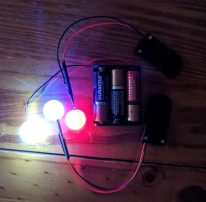Interesting times. Hitting a bunch of topics that are more than a little divergent but interesting.
Networking Security
Work keeps me deeply involved on this front. Down in the TLS RFCs, certificate stuff, algorithm and cipher suite options and some lower level work. This may sync well with some home project work as well at some point..later once I’ve gotten some other things back rolling.
WPF
I’m digging deeper into WPF coding for some of the simpler home-front tools. I’ve done a decent amount of JavaFX coding and MFC work but java doesn’t give me access to the low level APIs these tools need and MFC is old, crusty and much harder to work with.
WPF is a bit of an odd critter but seems to fit my needs decently. I’m still working through many of its oddities and figuring out what works well with its design but I’m optimistic that it will remain a good tool for prototyping on windows and for small home tools development.
Unity
Last year I did a good bit of Unity VR programming with a couple of friends.
The year since has been busy as I changed jobs and took on a very challenging set of problems at my new work (cybersecurity, networking security design and fitting it all into an existing architecture that goes back quite a way). I’m hoping that with the fall I will be able to put some more effort into home projects in off hours. Till now I’ve been working during work hours and digging into technology and background issues in off hours.
I’ve got the VR system downstairs back together and calibrated to the room. I’m still eyeing headset upgrades but don’t feel that I’m at the point where I want to throw the money at the systems that are out there.
I need to get back into the basic details needed to build out a VR Unity app. I know I have notes on this blog that will get me there. Once I have that together I’ll move forward with some ‘stretching exercises’ in VR.
I’m also realizing that both the VR environment and the flat screen environment Unity could be a nice environment for some amount of tooling so I’ll probably try to see if PInvoke and similar are supported. Being able to pull information out of a system and then render it and manipulate it in a Unity managed space seems potentially very interesting. With a bit of TLS and networking support and this might get even more interesting. Things to think about.
Rest of it…
I will almost certainly bite off more than I can chew on the home front. Hoping that some interesting bits will make it to a level where they’re useful. I’ll keep blogging here (and on my personal blog and pandamallet for more detailed game stuff). Hoping to reconnect with the friends I was working with a year ago and that a covid vaccine lets us all get back closer to normal life in 2021.





